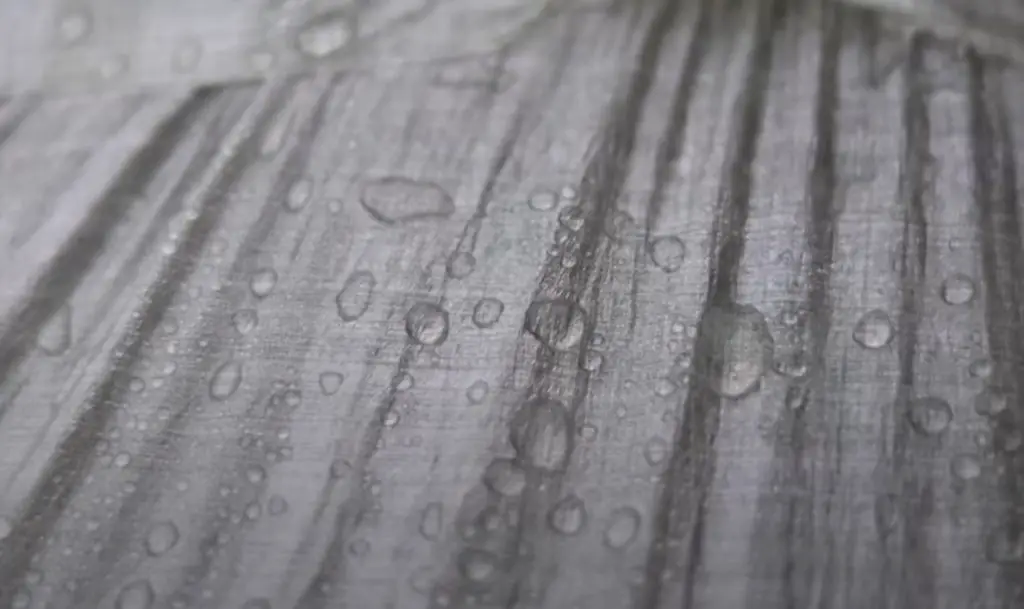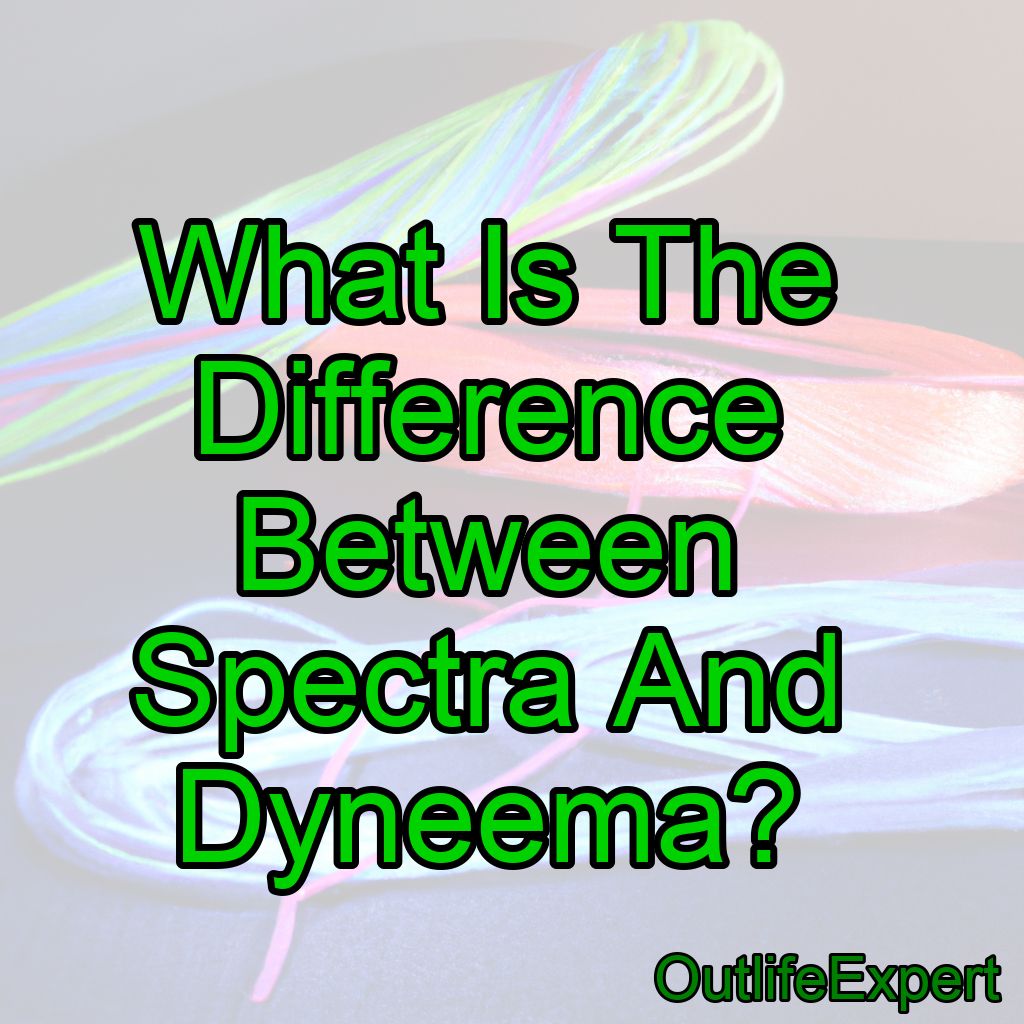As an engineer and outdoor enthusiast with experience in the field, I can provide you with a detailed explanation of the difference between Spectra and Dyneema. These two materials are actually different names for the same high-performance fiber, which is composed of ultra-high-molecular-weight polyethylene (UHMWPE). Spectra and Dyneema are trade names given by different manufacturers for their respective versions of this fiber.
Now, let’s dive deeper into the characteristics and properties of Spectra/Dyneema. This fiber is incredibly strong and has a high tensile strength, which means it can withstand heavy loads without breaking. In fact, it is one of the strongest fibers available on the market today. Its strength-to-weight ratio is exceptional, making it an ideal choice for applications where weight reduction is crucial, such as outdoor gear, ropes, and cables.
One of the key advantages of Spectra/Dyneema is its excellent resistance to abrasion and cutting. This characteristic is particularly important in outdoor activities where the equipment may come into contact with rough surfaces, sharp edges, or other abrasive elements. As an outdoor enthusiast myself, I’ve experienced situations where equipment made with this fiber has shown remarkable durability against wear and tear.
Another remarkable property of Spectra/Dyneema is its low stretch. Traditional materials like nylon have a tendency to stretch under load, which can negatively impact performance and precision in certain applications. However, Spectra/Dyneema fibers have minimal elongation, meaning they maintain their shape and integrity even under significant stress. This low stretch property is highly valued in activities like rock climbing, where a slight elongation could affect the safety and reliability of the gear.

In addition to its impressive mechanical properties, Spectra/Dyneema also possesses some unique characteristics that are worth mentioning. It is extremely lightweight, which not only contributes to reducing the overall weight of gear and equipment but also adds to the comfort and ease of use for outdoor enthusiasts. Carrying lighter equipment can make a significant difference, especially during long hikes or climbs.
Furthermore, Spectra/Dyneema exhibits excellent resistance to UV radiation and chemicals. This makes it highly suitable for outdoor applications where exposure to sunlight, water, and various chemicals is inevitable. Personally, I have used gear made with Spectra/Dyneema in various weather conditions, including intense sunlight and heavy rain, and have witnessed its resistance to degradation and color fading.
It’s worth noting that while Spectra and Dyneema are essentially the same fiber, different manufacturers may use slightly different manufacturing processes or add proprietary coatings to enhance specific properties. These variations can result in minor differences in the final products, such as color or surface texture. However, the fundamental characteristics of strength, low stretch, and resistance to abrasion and cutting remain consistent across both Spectra and Dyneema.
To sum it up, Spectra and Dyneema are both names for the same type of fiber, which is composed of ultra-high-molecular-weight polyethylene. These fibers are renowned for their exceptional strength, low stretch, resistance to abrasion, and lightweight nature. Whether you’re a rock climber, sailor, backpacker, or engaged in any outdoor activity that requires reliable and durable gear, products made with Spectra/Dyneema can offer a significant advantage.
Spectra: A Brief Overview
Spectra is a brand name for ultra-high molecular weight polyethylene (UHMWPE) fibers produced by Honeywell. These fibers are known for their incredible strength and lightweight properties, making them ideal for a variety of applications, including:
1. Ropes and lines for marine, industrial, and outdoor use
2. Body armor and ballistic protection
3. High-performance sports equipment such as sails, kites, and fishing lines
4. Aerospace and defense components
5. Medical devices and prosthetics
Dyneema: A Brief Overview
Dyneema is a brand name for UHMWPE fibers produced by DSM, a Dutch multinational company. Like Spectra, Dyneema fibers are known for their strength, lightweight properties, and resistance to chemicals and UV light. Some common applications for Dyneema include:
1. Ropes, lines, and slings for marine, industrial, and outdoor use
2. Body armor and ballistic protection
3. High-performance sports equipment such as sails, kites, and fishing lines
4. Aerospace and defense components
5. Medical devices and prosthetics
Production Process: Gel Spinning
Both Spectra and Dyneema fibers are produced using a process called gel spinning. This process involves dissolving ultra-high molecular weight polyethylene in a solvent, then extruding the solution through a spinneret to create thin fibers. The fibers are then cooled, stretched, and wound onto spools.
The production process for Spectra and Dyneema is very similar, but there are some minor differences in the spinning process and the specific solvents and additives used. These differences can result in slightly different properties and performance characteristics between the two fibers.
Strength and Lightweight Properties
Spectra and Dyneema fibers are both incredibly strong, with a strength-to-weight ratio up to 15 times greater than steel. This makes them ideal for applications where high strength and low weight are critical, such as ropes and lines for marine and outdoor use, body armor, and aerospace components.
The strength of both fibers is due to their ultra-high molecular weight, which allows for a high degree of molecular orientation and crystallization. This results in a tightly packed structure that is resistant to deformation under load. The lightweight properties of Spectra and Dyneema are due to their low density, which is lower than most other synthetic fibers.
Chemical and UV Resistance
Both Spectra and Dyneema fibers are highly resistant to chemicals, including acids, bases, and organic solvents. This makes them suitable for use in harsh environments where exposure to chemicals is a concern.
In addition to their chemical resistance, Spectra and Dyneema fibers are also resistant to UV light. This is an important consideration for outdoor applications, as exposure to sunlight can cause degradation in many other synthetic fibers.
Abrasion Resistance
Spectra and Dyneema fibers have excellent abrasion resistance, which is important for applications such as ropes, lines, and sails. The high molecular weight and tightly packed structure of these fibers make them resistant to wear and tear, even under heavy loads and harsh conditions.
Flex Fatigue Resistance
Both Spectra and Dyneema fibers have a high resistance to flex fatigue, which is the ability of a material to withstand repeated bending and flexing without breaking. This property is important for applications such as ropes, lines, and sails, where the fibers are subject to constant movement and stress.
Cost and Availability
Spectra and Dyneema fibers are both high-performance materials, and as such, they come with a higher price tag compared to other synthetic fibers. However, the superior strength, lightweight properties, and resistance to chemicals and UV light often make them worth the investment for specific applications.
In terms of availability, both Spectra and Dyneema fibers are widely available from various suppliers, with a range of products designed for specific applications and industries.
Conclusion: Spectra vs. Dyneema
In conclusion, the main difference between Spectra and Dyneema is that Spectra is a brand name for UHMWPE fibers produced by Honeywell, while Dyneema is a brand name for UHMWPE fibers produced by DSM. Both fibers share many similar properties, such as:
1. Incredible strength and lightweight properties
2. High resistance to chemicals and UV light
3. Excellent abrasion resistance
4. High flex fatigue resistance
5. Production through the gel spinning process
6. Common applications in ropes, lines, body armor, and aerospace components
7. Resistance to acids, bases, and organic solvents
8. A tightly packed molecular structure that contributes to their strength
9. A higher cost compared to other synthetic fibers
10. Wide availability from various suppliers
While there are some minor differences in their production processes and specific applications, both Spectra and Dyneema fibers offer exceptional performance characteristics that make them ideal for a wide range of industries and applications.
FAQs
How much does Spectra fabric weigh?
Spectra fabric weighs approximately 0.9 ounces per square yard.
Is Dyneema the same as Spectra?
Dyneema and Spectra are not the same, but they are both high-performance polyethylene fibers with similar properties. Dyneema is a brand name for a type of ultra-high molecular weight polyethylene fiber, while Spectra is a brand name for a similar fiber produced by Honeywell.
What is the strongest spectra rope?
The strongest spectra rope is typically made from ultra-high molecular weight polyethylene (UHMWPE) fibers, such as Spectra or Dyneema, which have a very high strength-to-weight ratio and excellent resistance to abrasion and UV exposure.
What is Spectra fiber made of?
Spectra fiber is a high-performance polyethylene material that is made from ultra-high molecular weight polyethylene (UHMWPE) and is known for its exceptional strength, durability, and resistance to abrasion and impact.
What is Spectra rope made of?
Spectra rope is made of ultra-high molecular weight polyethylene (UHMWPE) fibers that are braided together to create a strong and lightweight rope.
What is Spectra fabric used for?
Spectra fabric is a high-performance material that is used for various applications such as body armor, ropes, sails, and fishing lines due to its exceptional strength, durability, and resistance to abrasion and chemicals.




